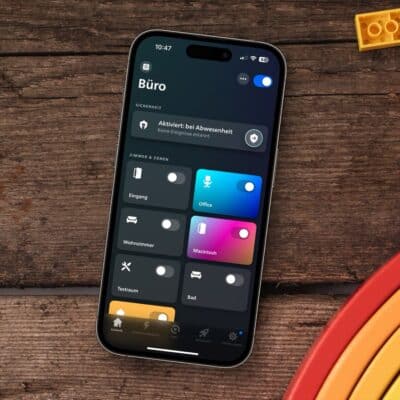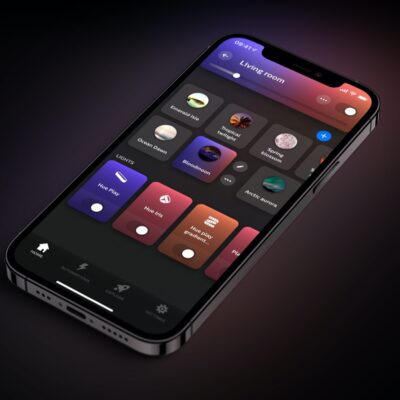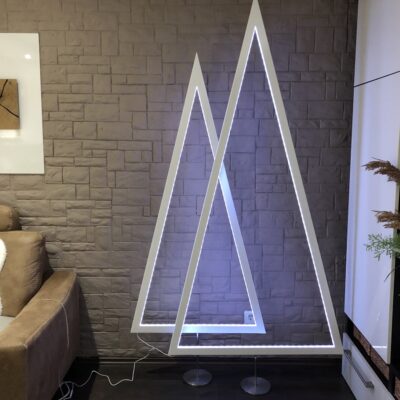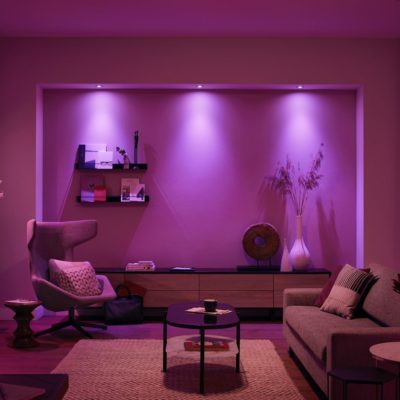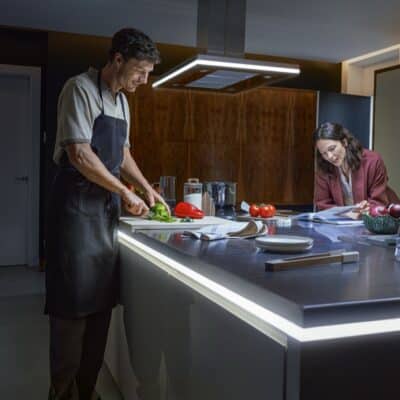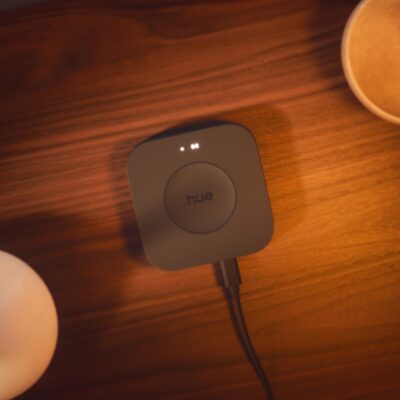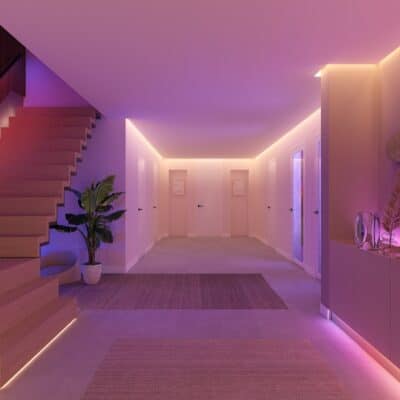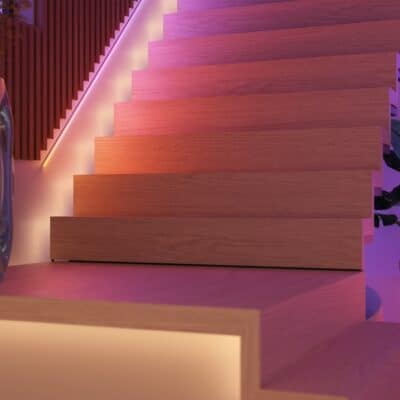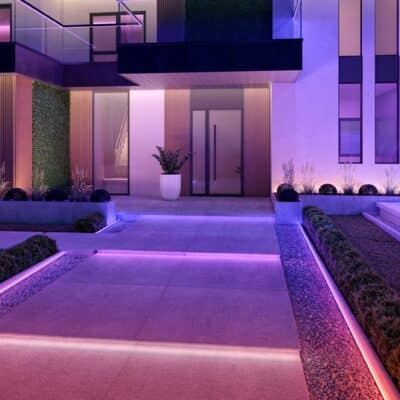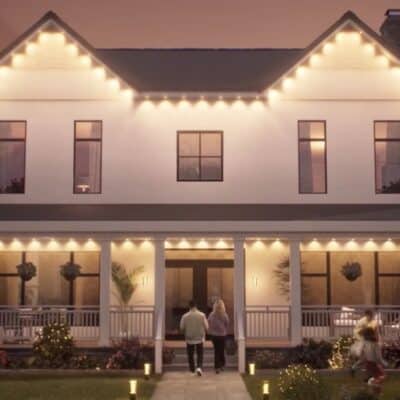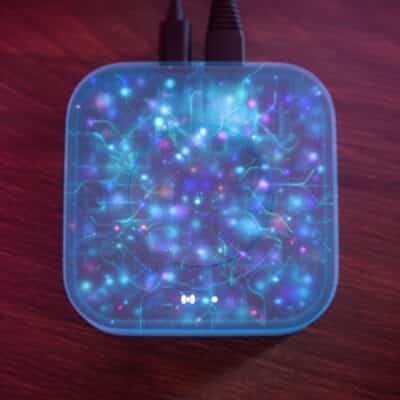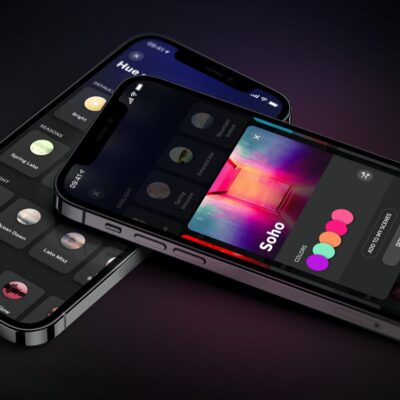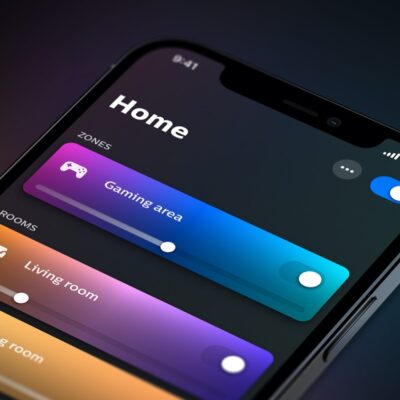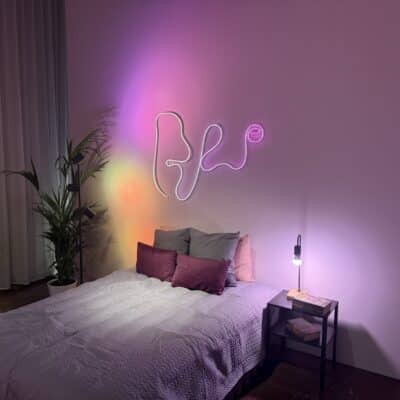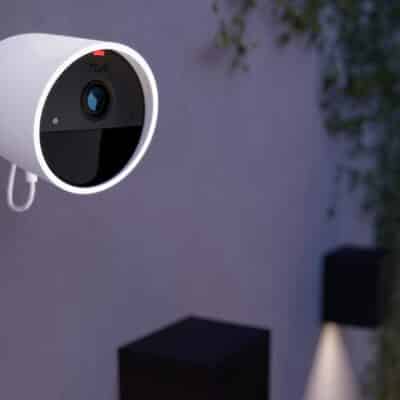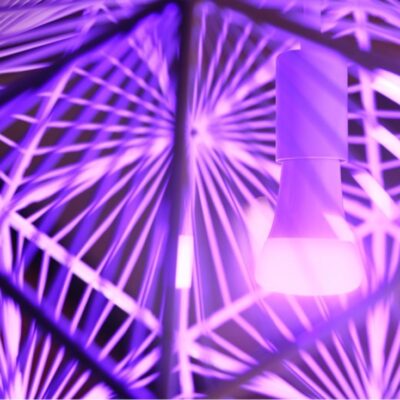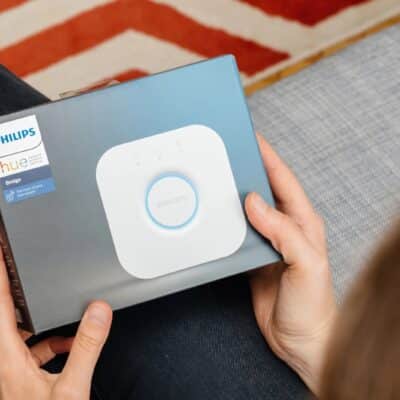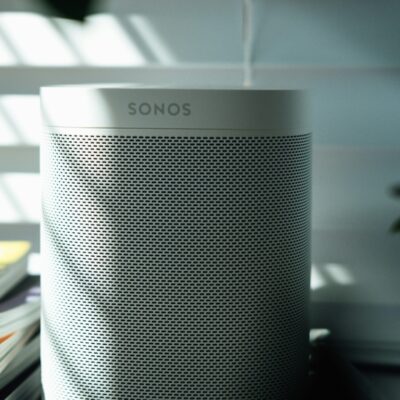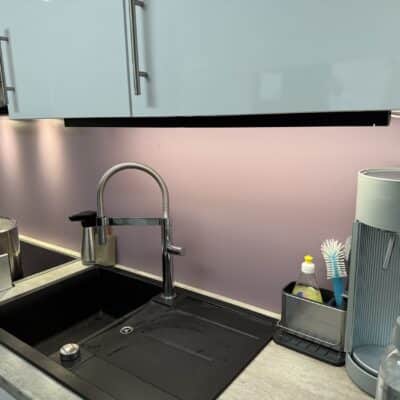In September 2024, Philips Hue announced that it would be launching specially adapted and optimized kitchen lighting in collaboration with German kitchen manufacturer Nobilia. In addition to spotlights, light strips have also been added to the range—and I had the opportunity to try them out in my kitchen. Unfortunately, I can already tell you that it won’t be that easy for you to get your hands on them.
That’s because the new Philips Hue Linear Gradient light strip is not yet available in stores, but only in conjunction with a kitchen from Nobilia. Only one retailer, which appears to have been working with the kitchen manufacturer for some time, currently has the light strips listed in its online shop – at prices that are likely to make us all gasp.
We have to see it this way: Philips Hue has teamed up with kitchen experts to simply try out such a product. With a relatively small distribution channel and without much marketing effort of its own. Perhaps something will change if the product proves convincing and arouses interest?
These are the conditions in my kitchen
I have been using a light strip in my home. First, the Philips Hue Lightstrip Plus, and then, for some time now, the Philips Hue Ambiance Gradient Lightstrip. The LEDs on this strip are much closer together, which ensures more even illumination. I have a problem: the kitchen is interrupted by an extractor hood. Therefore, I could only attach the light strip to the wall in an aluminum profile. Certainly not an ideal solution.
Now I have been offered the opportunity to test the Philips Hue Linear Gradient. The light strip is available in three different lengths: 45, 60, and 75 centimeters. Individual strips can be easily connected to each other and are powered by a 60-watt LED driver. This should enable a brightness of 1,000 lumens per meter – up to six meters long and 6,000 lumens bright.
Installing the Philips Hue Linear Gradient in a non-Nobilia kitchen
As far as the installation and setup of the Philips Hue Linear Gradient is concerned, I can already say that the product is ready for the end consumer. You really don’t need much technical skill to install the light strips under the cabinets in the kitchen. The fact that the packaging is just a simple cardboard box without pictures or a logo doesn’t bother us at this point, of course.
Installation is very simple: two small metal clips are attached to the underside of the kitchen cabinet with a wood screw for each light strip. The light strip is then simply inserted into the clips. Power is supplied via a power outlet, ideally located above the kitchen cabinets. The cable is then simply routed down behind the cabinets.
If you want to connect several light strips together, simply insert small contacts and plug the elements together. Again, it’s impossible to go wrong.
The Philips Hue Linear Gradient light strip shines brightly
Once the LED driver, Zigbee controller, and light strip are successfully connected, the Philips Hue Linear Gradient kitchen lighting works just like any other Hue light bulb. You can select different shades of white, adjust the brightness, and create color gradients. Integration with scenes or control via a switch is also possible without any problems.
I was impressed by the lighting result. The individual LED points are even closer together than with the Ambiance Gradient Lightstrip. The light shines diagonally to the rear and illuminates the kitchen wall and work surface very evenly. The white tones in particular are extremely bright, much brighter than the previous light strip.
I only lost a little luminosity in the area of the extractor hood, because there is no longer a light strip installed here, only two GU10 spots. I replaced the old spots with the new generation from 2024 to create a little more brightness again.
The big question was: What would my wife say? She also liked the Philips Hue Linear Gradient light strips, even though she might have preferred a different housing color. She even found the light too bright, but I was able to adjust that easily.
All that’s still missing for the finished end product
If the Philips Hue Linear Gradient light strips actually come onto the market as a finished product, I think a few improvements are still necessary. And I don’t just mean the design of the packaging.
For example, I would like to see two more color options; a silver or white housing would be great. In addition, the Zigbee controller should be moved closer to the LED driver. It is currently located near the light strip, and I couldn’t squeeze it behind the kitchen cabinet on the right side of my kitchen.
The LED driver would certainly get a new design as well; currently, it is completely bare. However, Philips Hue has already shown with the Perifo series that such a plug-in solution is not a problem. Philips Hue also needs to rework the end caps of the light strips, as a little light currently shines through a small gap in the housing.
The conclusion: this product belongs in the portfolio
Easy installation, excellent lighting, and smart control as usual. In my opinion, the Philips Hue Linear Gradient light strips definitely belong in the Philips Hue range. A list price of between $150 and $250 per module would be conceivable.
A light strip is certainly sufficient for simple kitchens, but the light strips would definitely be the next step. But would they be something for you? Feel free to write your opinion on the subject of kitchen lighting in the comments.


